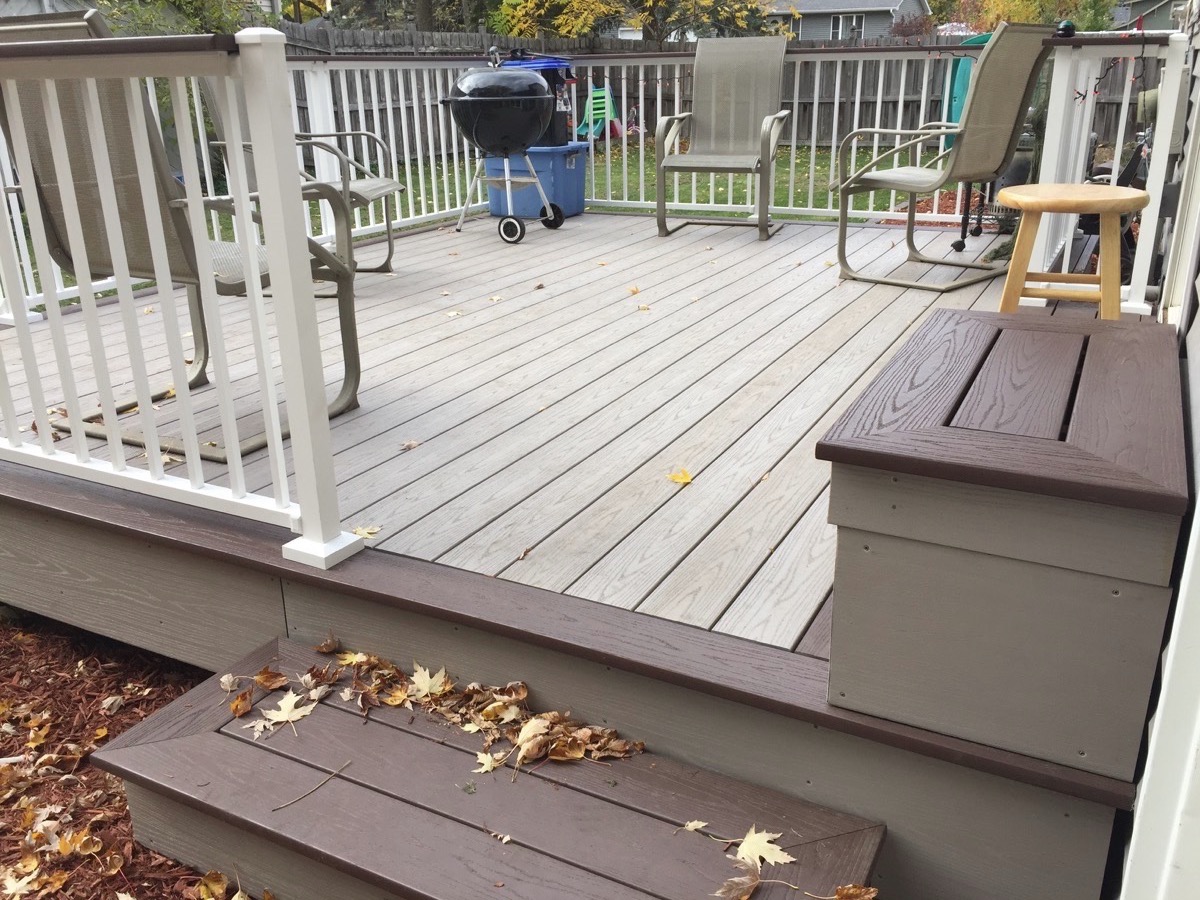 |
tim@edeck.net 651-344-1849 |
Plans > Size The following is a summary of factors to consider when selecting the size of your deck. The circle represents a 4 ft. table on the rectangular deck. Here you can get an idea about how much space you want. Sizes are offered in 2-ft increments since the lumber is sold that way. |
||||||||||||||||||||||
Don't worry, your deck will not look like a black rectangle. This is simplified to arrive at a rough concept and a price. Introducing angles* and combining basic shapes makes your deck unique.
10 foot decks (depth from house) In Minnesota, your footings to support the deck are critical. And because of the expense, its a good idea to get the most square feet that you can for each footing and post you install. Of course, you need at least two posts. It is rarely worth it to build anything smaller than 10 feet by 10 feet unless its for a catwalk. Limiting the length to under 16 feet for cedar or treated, and 20 feet for many composites. -- 24 feet with vinyl allows for the unseamed straight installation of the decking.Longer decks can be split into two levels for a very small cost. |
||||||||||||||||||||||
|
||||||||||||||||||||||
| 12
foot decks (depth from house) Since the decking must be seamed once you go longer than 16 feet, if you are going to go 18 feet, you might as well go 20. This puts the lower posts 10 feet apart and maximizing their support potential. Longer decks can easily be split into two levels at a very small cost. |
||||||||||||||||||||||
|
||||||||||||||||||||||
|
This is where the type of treated lumber being used comes into play. Using #1 grade treated ponderosa pine 2x10's (typical green treated), 14 feet is the most you can go out from the house with conventional framing. If you go farther than 14 feet, you must add another row of posts or move the joists closer together, or use #1 lumber instead (typical brown treated "cedartone").
|
||||||||||||||||||||||
|
At this size, we should use #1 graded treated southern yellow pine (#1SYP "Cedartone") is brown in color instead of green. 16x16 is a very efficient size, just 3 footings, and 16 foot seamless decking. It can be increased in size to 19 feet easily by adding a single, double, or triple border around it. |
||||||||||||||||||||||
| 20 foot decks | 16 x 20 using #1SYP brown treated "Cedartone" is a very efficient size, maximizing the 3 footings, and 20 foot seamless decking. It can be increased to 23 feet easily by adding a border around it, although it would require 1 more footing. | |||||||||||||||||||||
| Borders can extend a deck. | a border can extend a deck 1 ft (single row), 2 ft (double row), or even 3 ft (triple row), and you will still have no seams. Single border Double border
|
|||||||||||||||||||||
| When decks are extend 20 ft in length (along the house) |
A divider strip is used to avoid having seams. |
|||||||||||||||||||||
| When decks extend over 16 ft (from the house) | The maximum span of a 2x10 #1SYP joist is almost 18 ft. But 16 ft is more practical. 16' joists are commonly available at lumber yards, but 18' needs to be ordered. The deflection is too much with 2x10s spanning 18', so essentially it means another row of footings. | |||||||||||||||||||||


